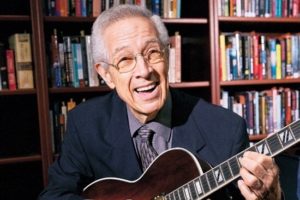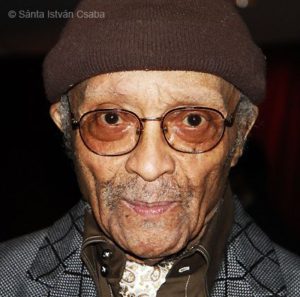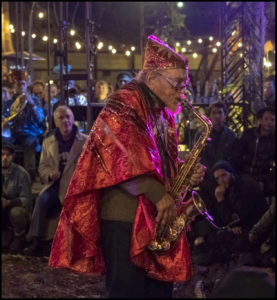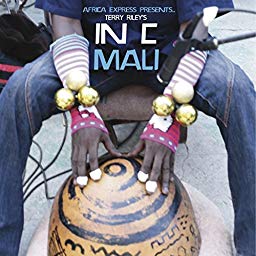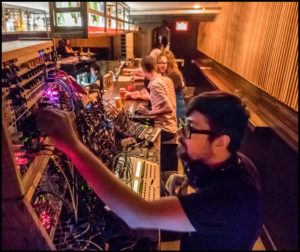Guitarist Kenny Burrell — since the 1950s a prominent, popular and influential jazz innovator, recording ace, bandleader and esteemed educator (prof and director of Jazz Studies at UCLA) — at age 87 is suffering grievous financial calamity due to health care costs and multiple frauds. His plight is candidly detailed by his wife Katherine at […]
Audio-video jazz improv: Mn’Jam Experiment, w/teens
What’s really new in improvisational music? Where else can innovation go? Mn’JAM Experiment — singer Melissa Oliveira and her visual/electronics/turntablist partner JAM — are daring to mix high-tech audio-with-video media in live performance, and as they say, it’s an experiment, in a direction that live performance seems sure to go. Grounded in jazz fundamentals (call […]
2018 jazz, blues and beyond deaths w/ links
Not a happy post, but a useful one: here are the hundreds of musicians and music industry activists who died in 2018, as compiled by photographer-writer Ken Franckling for the Jazz Journalists Association. Ken scoured local newspapers, the Jazzinstitut Darmstadt newsletter, AllAboutJazz.com, Wikipedia, the New York Times, Legacy.com, Rolling Stone, Variety, JazzTimes.com, blogs, listserves, Facebook pages and […]
Legacies of Music Makers
The deaths of multi-instrumentalist Joseph Jarman, best known as the face-painted shaman of the Art Ensemble of Chicago, and Alvin Fielder, re-conceptualizing drummer, remind us that artists’ contributions to music extend beyond recordings and awards. Read my essay at NPR Music, commissioned by Nate Chinen of WBGO, on the enduring legacies of Jarman and Fielder, […]
Extraordinary Popular Delusions, Chicago free improv all-stars
Keyboardist and synthesizer specialist Jim Baker has led the collective quartet Extraordinary Popular Delusions playing every Monday night in obscure Chicago venues for the past 13 years. My article on EPD, which features saxophonists Mars Williams and Edward Wilkerson Jr. (they switch off), multi-instrumentalist (bass, guitar, trumpet) Brian Sandstrom and percussionist/drummer Steve Hunt — all […]
Luminous PoKempner pix of Sun Ra’s celestial music
Marshall Allen, ageless 94, leads the Sun Ra Arkestra If you liked Black Panther, listen to the music that introduced and embodies Afro-Futurism. Photojournalist Marc PoKempner captured a bit of the celestial magic of the Sun Ra Arkestra (est. circa 1954) during its November touchdown in New Orleans’s Music Box Village. This picturesque venue is […]
Chicago blues at 90
Guitarist Jimmy Johnson’s birthday at Space – photos by Harvey Tillis  Blues have been heard in Chicago for about 100 years — and blues guitarist Jimmy Johnson has been alive for 90 of them. Johnson, born just four years after Papa Charlie Jackson was reported busking with his guitar on Maxwell Street, celebrated his entry […]
Labor Day jazz fests, starting with Chicago’s
The 40th annual Chicago Jazz Festival, four days free to all of unfettered, usually joyous music held in beautiful downtown Millennium Park, started last night with stars of of the local scene celebrating  “Legends and Lions”. Add “Ancient to the Future” to set the tone for a weekend of exciting, civically-supported music here — and similar outpourings of jazz […]
“In C” for performance on any laptop, thanks to LUTE
Terry Riley’s 1964 ingenious, joyful and warm composition “In C” can now be performed by anyone with a laptop, regardless of their previous musical or technological experience. On Sunday 8/12/18, the Loyola University Technology Ensemble (LUTE) organized a participatory concert of the sublime communitarian piece — which comprises 53 brief melodic figures, to be played […]
Synth and-sushi bar, Chicago (future jazz, present tense)
K-rAd freely improvised and spontaneously composed an original, pulsing, burbling, chiming, floating and ripping, multi-layered, deep and flowing funky-bassed, percussion-lively suite over about three hours last night (7/25/18), using his elaborate, sound-unbound Euro-rack synthesizer setup to stir, smooth and spice social interactions in a seemingly unlikely Chicago venue for such a thing. Down an alley, through a back […]
Cecil Taylor, dead at 89, as celebrated when he’d turned 80
The brilliant, challenging, perplexing and incomparable pianist/improviser/composer Cecil Taylor died April 5, 2018, at age 89. Here’s what I wrote of him to celebrate his 80th birthday: Cecil Taylor, unique and predominant, 80 years old 3 27 09 Cecil Taylor is the world’s predominant pianist by virtue of his technique, concept and imagination, and one of […]
Jazz and beyond projects with 2018 NEA funding support
Given all the noise, the National Endowment for the Arts’ $25 mil for arts, literature and education announced Feb. 7 may have been overlooked. But these funds and the projects they support, nationwide, should be noted. From more than $3 million going to initiatives strictly labeled “Music” (exclusive of “Musical Theater” or “Opera”) here’s my subjective selection of […]
Jazz Congress, Winter JazzFest, shape of jazz to come
The first Jazz Congress co-hosted by Jazz at Lincoln Center and JazzTimes magazine Jan 11 and 12, 2018 and the 14th annual Winter JazzFest Marathon produced in downtown Manhattan Jan 12 and 13, offered contrasts and prompted crosstalk. It wasn’t like these were conventions of different parties, but different narratives were going down. The Congress’s sessions […]

